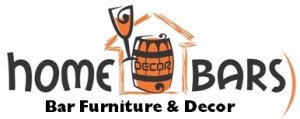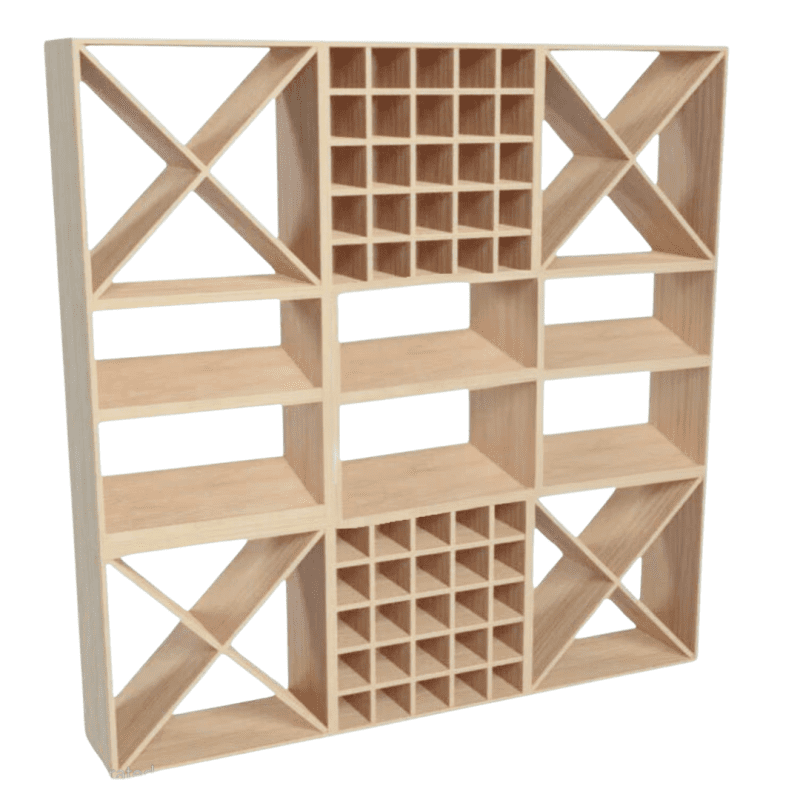Uncategorized
Different Wine Racks to Optimize Your Cellar
Different Wine Racks to Optimize Your Cellar
Do you struggle with keeping your wine collection organized? I have been there, and I know it can be frustrating to search for the perfect wine rack. In this article, I explain how to choose the best wine rack, review different types available, and share maintenance tips for optimal storage. By reading this post, you can solve common cellar issues and enjoy a neat, well-organized wine collection.
Key Takeaways
- I protect wine quality through specific storage conditions and tailored rack systems
- I prioritize both practicality and style in every aspect of my cellar design
- I use detailed evaluations to ensure my rack structure supports various wine types
- I maintain optimal climate control with digital sensors and effective cleaning routines
Understanding Wine Storage Needs
I view wine storage as a way to protect quality and flavor. I ensure oak wine bottles remain well-preserved with tailored racks and proper storage conditions.
I pay close attention to the types of bottles I store, such as box wine and oak varieties, to meet their specific needs. I choose racks that match each wine’s requirements while maintaining optimal storage conditions.
I rely on sturdy aluminium rack designs, which offer both durability and style. I often use these racks to secure different wine types in my collection.
I prioritize precise storage practices that suit the materials of my wine, whether oak or box wine. I find that using versatile racks and aluminium complements the overall wine storage system effectively.
Selecting the Ideal Wine Rack
I review my space needs, bottle sizes, and temperature control options. I compare storage solutions like wine wall rack, cart, and wine glass displays, and even consider storing wine boxes in my kitchen. This focused approach helps me choose a design that fits my collection and personal style, ensuring practical and visually pleasing outcomes.
Assessing Your Space Requirements
I review my space by measuring key areas, ensuring the design of my cellar fits different types of wine racks. I consider my floor layout and overall budget while keeping in mind how each design improves how I drink and store my collection.
I assess storage options by examining the available floor space and structural support needed for certain materials like alder. I finalize a plan with clear space requirements, ensuring a balanced design that suits both drink habits and budget needs:
| Aspect | Detail |
|---|---|
| Design | Plan a layout that matches your cellar dimensions |
| Budget | Allocate funds based on priority pieces |
| Floor | Ensure proper support and material compatibility |
| Alder | Use alder racks for a natural, sturdy option |
| Drink | Select racks that complement your wine routine |
Evaluating Bottle Capacity and Size
I review the bottle capacity of each rack to determine if it meets my collection’s needs. I consider every detail, from the size of each bottle to whether a freestanding metal wine rack will hold my custom wine pieces, ensuring my setup stays true to my dream storage design.
I also compare options available at retail shops with my own personal requirements. Evaluating the bottle size and capacity helps me choose a system that combines practicality with style while keeping my collection secure and organized.
Considering Temperature Control Features
I have examined temperature control features extensively while setting up my cellar, and I find that insulated basements are ideal for maintaining stability with metal and steel wine racks. I store liquor and wine using wooden wine racks to ensure the correct ambient conditions, which directly benefits the taste and longevity of my collection.
In my experience, proper climate regulation is key, especially when using a mix of metal and wooden wine racks in cooler basement environments. I apply precise temperature control settings to protect my liquor and wine, ensuring that my cellar remains a reliable space for preserving quality and flavor.
Identifying Design and Aesthetic Preferences
I consider every detail when I identify design and aesthetic preferences for wine racks, ensuring that each piece fits both my technical needs and personal style. I compile my approach as follows:
- Assessing available space and layout
- Selecting materials such as walnut and stainless steel
- Incorporating options like a crate setup for bota box wine
- Opting for custom wine racking to satisfy specific collection requirements
I focus on creating a setup that not only preserves my collection but also reflects my taste, as I favor distinct elements like a crate or stainless steel design that stand out in any cellar.
Types of Wine Racks Available
I evaluate wall-mounted wine racks, free-standing solutions, modular setups, and cooling units for wine. I consider each option based on winemaker designs, wood and glass finishes, and overall wine cellar design. I focus on improving customer experience while sharing practical insights on selecting the best system for my collection.
Wall-Mounted Wine Racks
I have found that wall-mounted wine racks help me optimize space efficiently in my cellar. I often install racks with a bronze finish that complements my dining room and provides precise humidity control to preserve wine quality.
My experience shows that these racks offer a practical solution for customers seeking elegant storage. I regularly recommend wall-mounted designs, as they are durable enough to ship collections safely while providing reliable support in varying cellar conditions.
Free-Standing Wine Storage Solutions
I have found that free-standing wine storage solutions offer flexible placement and ease of movement, making them a practical addition to any wine cellar design. I often compare the unit price and benefits of these systems to other wine racking options, noting that the evolution of modern refrigerators and wine cellar cooling units has significantly enhanced their performance and reliability:
| Feature | Benefit |
|---|---|
| Unit Price | Cost-effective investment for quality storage |
| Wine Racking | Improved organization and accessibility |
| Refrigerator | Maintains ideal temperature levels |
| Wine Cellar Cooling Unit | Delivers consistent climate control |
I appreciate these systems for their straightforward installation and ease of integration into various spaces. My hands-on experience has shown that investing in a quality free-standing wine storage solution provides a reliable method to maintain optimal conditions for my collection while keeping setup costs reasonable.
Modular and Customizable Racks
I have often used modular and customizable racks to create a more efficient storage of wine in my cellar. I mix countertop displays with built-in wine cork holders, seamlessly incorporating adjustable components to fit each wine bottle perfectly, and providing a practical solution for wine racks for home setups.
My experience shows that this flexible design allows me to reconfigure the setup based on my collection’s changing needs. I easily integrate features like a countertop finish and a wine cork holder into my modular system, ensuring that every wine bottle is gracefully stored while meeting the demands of a dynamic cellar environment.
Refrigerator and Cooling Units for Wine
I have observed that refrigeration units with cooling features play a key role in wine bottle storage, ensuring that every mahogany wine rack and storage solution in my cellar operates at peak efficiency. I often rely on these systems to maintain a consistent climate, which directly improves the lifespan and quality of both wine and beer collections.
I also find that integrating a modern wine rack with cooling units simplifies the overall setup of my cellar. In my experience, well-regulated temperature and moisture levels contribute to a reliable storage system that supports my prized wine and beer bottles, making routine maintenance manageable and effective.
Materials Used in Wine Racks
I cover the benefits of wood wine racks, advantages of metal wine racks, and glass wine racks with stylish display options. I also highlight sustainable, eco-friendly choices. My review includes topics like using a shelf for quick view storage, wall mounting techniques, and choosing a comfortable chair setup, ensuring a well-rounded approach to optimizing your cellar.
Benefits of Wood Wine Racks
I find that wood wine racks offer a warm, natural look that fits well in any wine cellar or bedroom. Using a wooden wine bottle holder not only provides stability for my collection but also creates a refined room setup that works seamlessly as a wine holder in both modern and traditional spaces.
The inherent strength of wood ensures durability while maintaining an aesthetic that enhances the overall charm of my cellar. As I incorporate a wooden wine bottle holder into my room, I appreciate its versatility and ease of integration, which simplifies the process of organizing my cherished wine collection.
Advantages of Metal Wine Racks
I have discovered that metal wine racks offer superior durability and a sleek finish that perfectly complements a custom wine cellar. My setup often includes elements like a sub zero wine fridge and a wine rack with tabletop, which work seamlessly with metal racks featuring a nickel accent to boost both functionality and style:
| Feature | Benefit |
|---|---|
| Durability | Increases the lifespan of your wine storage system |
| Design | Provides a modern look that enhances your custom wine cellar |
| Integration | Easily pairs with sub zero wine fridges and wine rack with tabletop setups |
I have personally experienced that metal wine racks simplify maintenance while ensuring stable storage for my wine collection. The combination of robust metal design and thoughtful accessory integration allows me to maintain an organized and visually appealing cellar that meets all my storage needs.
Glass Wine Racks and Display Options
I have found that glass wine racks offer a sleek solution for optimal wine storage while enhancing the overall look of my cellar. I incorporate subtle lighting to highlight each bottle and maximize available space in my wine rack system, ensuring both style and functionality.
My experience using glass wine racks has shown that they provide excellent visibility for my prized collection and work well alongside wine lockers to secure valuable bottles. I use these systems to create a balanced display that meets my storage needs and improves the ambiance of my cellar environment.
Sustainable and Eco-Friendly Choices
I prefer sustainable choices that use materials like pine to create eco-friendly rack systems for my wine cellar. I use responsibly sourced pine to build durable furniture that blends seamlessly with my cellar ceiling design and gives me confidence in its long-term performance:
| Material | Benefit |
|---|---|
| Pine | Eco-friendly and durable for rack systems |
| Furniture | Complements the overall design of my cellar |
| Ceiling | Supports hanging or wall-mounted fixtures efficiently |
I have found that choosing sustainable materials has improved the efficiency of my storage solutions while proving beneficial on both environmental and economic fronts. My ability to integrate eco-friendly rack systems with quality pine hardware and complementary ceiling features has made my wine storage setup both practical and visually appealing.
Organizing Your Wine Collection Effectively
I organize my wine collection by region and grape type, ensuring each bottle finds its proper place. I label and track inventory carefully, which helps me maintain order. I also adapt storage based on seasons and specific events to optimize cellar space. This structure sets the stage for detailed tips on categorizing, tracking, and seasonally organizing your collection.
Categorizing by Region or Grape Type
I sort my wine collection by region and grape type to maintain a clear and efficient storage system. I find that classifying bottles this way makes it easier to retrieve the perfect wine when needed, ensuring that every choice fits my dinner plans and special occasions.
When I organize by region or grape variety, I use structured racks that allow me to see my collection at a glance. This method has helped me manage my cellar efficiently, making it simple to track which wines I have and helping me plan future wine purchases based on my personal preferences.
Labeling and Tracking Your Inventory
I organize my wine collection by carefully labeling each bottle and using tracking software to monitor inventory. I document details such as production year, region, and grape type to ensure quick retrieval during special events:
- Region categorization
- Grape variety identification
- Production year tracking
I monitor my collection using a digital log that matches each wine rack with its corresponding label. This method helps me quickly find the bottle I need, making the process of tasting and serving wine more efficient for my cellar setup.
Seasonal and Occasion-Based Organization
I adjust my wine cellar setup according to seasonal changes and special celebrations. I allocate space for bottles that suit warmer or cooler periods and arrange my racks to display wines perfect for anniversary dinners or holiday parties.
I monitor my collection and shift the organization as new purchases arrive and events approach. I find that this practice helps me access the right bottle quickly and improves my overall enjoyment during festive gatherings.
Maintenance Tips for Wine Racks
I maintain my wine racks by cleaning regularly, checking their structure, and shielding bottles from light and humidity. I rely on practical routines for upkeep, detailed inspections for stability, and measures to protect each bottle. This approach helps me ensure my cellar runs smoothly and safeguards my collection effectively.
Regular Cleaning Practices
I make it a habit to dust and wipe down my wine racks on a weekly basis using a soft microfiber cloth and a gentle cleaner to protect the finish and avoid residue buildup. I monitor areas prone to moisture and fingerprints, ensuring that each rack remains pristine and continues to provide a secure environment for my wine bottles.
I schedule more thorough cleaning sessions every few months to check for any signs of wear or structural damage and to address hard-to-reach spots. I focus on maintaining a consistent routine that reduces the risk of mold and preserves the aesthetic of my cellar, allowing me to enjoy a well-organized and attractive wine rack system.
Checking Structural Integrity
I inspect every connection and screw on my wine racks to ensure that the structure remains firm over time. I use my eye for detail to verify that there are no loose elements or wear patterns, which helps me avoid any potential issues before they become a problem.
I routinely apply my maintenance routine by testing the rack’s load-bearing capabilities and tightening any joints that show signs of stress. I trust this hands-on evaluation process to keep my cellar setup functioning efficiently and to protect the integrity of my wine collection.
Protecting Wine From Light and Humidity
I secure my wine collection by keeping it shielded from direct sunlight and high humidity levels, which can damage both the taste and structure of the bottles. I install light-blocking curtains and use dehumidifiers strategically to create a stable environment for my wine cellar:
- Shield bottles from direct sunlight
- Install dehumidifiers near storage areas
- Use soft covers on racks to reduce light exposure
I regularly monitor environmental conditions with reliable sensors, and I adjust the setup as needed to maintain a comfortable climate, ensuring that every wine bottle retains its quality over time.
Enhancing Your Wine Storage Experience
I add LED lighting to my rack, incorporate decorative elements, and integrate temperature monitoring tools to maintain ideal conditions. I also showcase wine labels for easy selection, making my cellar both functional and visually appealing. This practical approach lays out a clear roadmap for optimizing wine rack systems effectively.
Adding LED Lighting to Your Rack
I install LED lighting in my wine rack to improve visibility and create an inviting ambiance in my cellar. I regularly update my setup with energy-efficient LEDs that highlight each bottle, ensuring my collection is showcased with precision and clarity.
In my experience, incorporating LED lighting proves valuable in maintaining an organized and visually appealing cellar. I find that these lights not only help me locate each bottle easily but also contribute to an overall modern look in my wine storage area.
Incorporating Decorative Elements
I integrate decorative elements into my wine storage setup because I find that a well-designed display not only improves the cellar’s appearance but also makes it easier to locate bottles quickly. I use a variety of design accents that include artwork, personalized labels, and stylish glass inserts to create a unique ambience in my wine cellar:
- Artwork that complements the color scheme
- Personalized labels for clear identification
- Stylish glass inserts to enhance visual appeal
I customize my wine racks with simple decorative details that suit the overall design of my cellar. By incorporating these elements, I make sure the space reflects my personal taste while offering a functional and visually appealing storage experience.
Integrating Temperature Monitoring Tools
I use temperature monitoring tools in my wine cellar to maintain a precise climate that safeguards the bottles from fluctuations. My approach combines affordable digital sensors and smart thermostats that alert me to any changes, ensuring my collection remains in optimal condition.
I rely on these monitoring devices to avoid issues with humidity and temperature spikes that could compromise wine quality. Testing the setup routinely helps me address any inconsistencies early, allowing for smooth cellar operations and a secure storage environment.
Showcasing Wine Labels for Easy Selection
I display wine labels clearly on my racks to simplify my selection process when choosing a bottle, which minimizes time spent searching in my cellar. I have found that a well-marked label system allows me to quickly locate wines and track their storage details, ensuring an organized setup:
- Clear label positioning
- Consistent labeling format
- Efficient retrieval and tracking
I utilize defined label sections on each storage unit to meet my practical needs and streamline cellar management. I make sure that every bottle is identifiable at a glance, which reduces confusion and supports a smooth wine tasting experience.
Frequently Asked Questions
What factors ensure proper wine storage?
Proper wine storage requires a cool and steady temperature, regulated humidity, and limited light exposure. Keeping bottles on their side maintains cork moisture, which supports lasting wine quality.
Which material best fits your wine rack needs?
Solid wood offers a timeless look with proven durability, while metal provides a sleek design and reliable strength to securely support your bottles.
How do I organize my wine collection?
I sort my wine collection by type, region, vintage, and storage needs. I label each bottle clearly and use a tracking tool to maintain order and ensure easy access.
What makes an ideal wine rack design?
I believe the best wine rack design uses space wisely, supports bottles securely, and blends style with practicality for simple bottle rotation and access.
How should wine racks be maintained?
I clean wine racks with a soft, damp cloth to remove dust and dirt. I inspect each rack for rust or damage and keep the area well-ventilated to stop moisture buildup.
Conclusion
I use diverse wine racks to create a cellar that supports the unique needs of my collection. I apply tailored options like wall-mounted, free-standing, and modular units to organize and showcase my wines efficiently. I maintain an environment that protects quality by incorporating temperature control and careful material selection. I achieve a streamlined setup where each rack serves a practical purpose, ensuring my cellar remains both organized and visually impressive.




